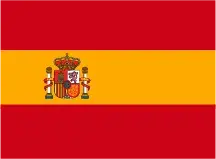Circular 1/2024 will enable Spain to progress towards a more organised and transparent access to the electricity grid, which represents an advantage for Charge Point Operators (CPOs).mobility.
This regulation, approved by the National Commission on Markets and Competition (CNMC), establishes rules that will, in part, facilitate the expansion of charging infrastructure across the country.
But what really changes for CPOs?
One of the aspects addressed in the standard is the introduction of alternative firm capacity with guaranteed supply.
This forces grid managers to offer an alternative when the requested power cannot be fully met, but there is capacity to cover a percentage of it.
In practice, this prevents distributors from rejecting applications without justification.
Circular 1/2024 was published in September 2024 and entered into force on January 12, 2025.
“Its objective is to guarantee orderly, transparent, and efficient access to the grid, benefiting all demand, including CPOs,” the CNMC tells Mobility Portal España.
What benefits will it offer to CPOs?
On the one hand, greater transparency in the network’s capacity for charging points (Art. 16).
This establishes the obligation for transmission and distribution network managers to maintain an updated record of the available capacity at each substation connection node.
This will allow CPOs to know in advance the existing capacity at each point in the network, facilitating the planning of new charging points.
On the other hand, web platforms will be created for processing charging point applications (Art. 14).
When will they be available? “It’s expected to be available in November 2025,” they say.
According to the second final provision, network managers will have ten months from the Circular’s entry into force to adapt the content of their platforms.
“Since the Circular enters into force three months after its publication in the Official State Gazette (BOE), the total period from publication is thirteen months,” they explain.
Another advantage is the establishment of homogeneous criteria for the evaluation of the demand for charging points (Art. 18).
To this end, detailed specifications are expected to be published in the coming weeks/months, allowing distributors to apply common criteria.
This will make it easier for CPOs to calculate the available capacity for demand, including new charging points, and optimise the use of the grid.
The last benefit mentioned by the CNMC is flexible access to charging infrastructure (Art. 3).
“This means that some facilities may be able to connect to the grid with restrictions at certain times,” they say.
This seeks to promote the development of “refueling” points in locations where fixed access capacity is limited, optimizing network use.
A regulatory framework with pending challenges
While Circular 1/2024 represents a step forward in terms of regulation, challenges remain.
The Business Association for the Development and Promotion of Electric Mobility (AEDIVE) has noted that the delay in implementing regulations continues to be an obstacle to meeting charging infrastructure goals.

According to AEDIVE, the ten-month deadline for distributors to adapt their digital platforms means that, in practice, administrative simplification will not be effective until the end of 2025.
“This situation is particularly worrying in view of the targets for deploying charging infrastructure for light and heavy vehicles to comply with the European AFIR Regulation,” they detail in their Yearbook.
Added to this is the lack of oversight and sanctioning mechanisms to ensure compliance by network managers with their obligations.








